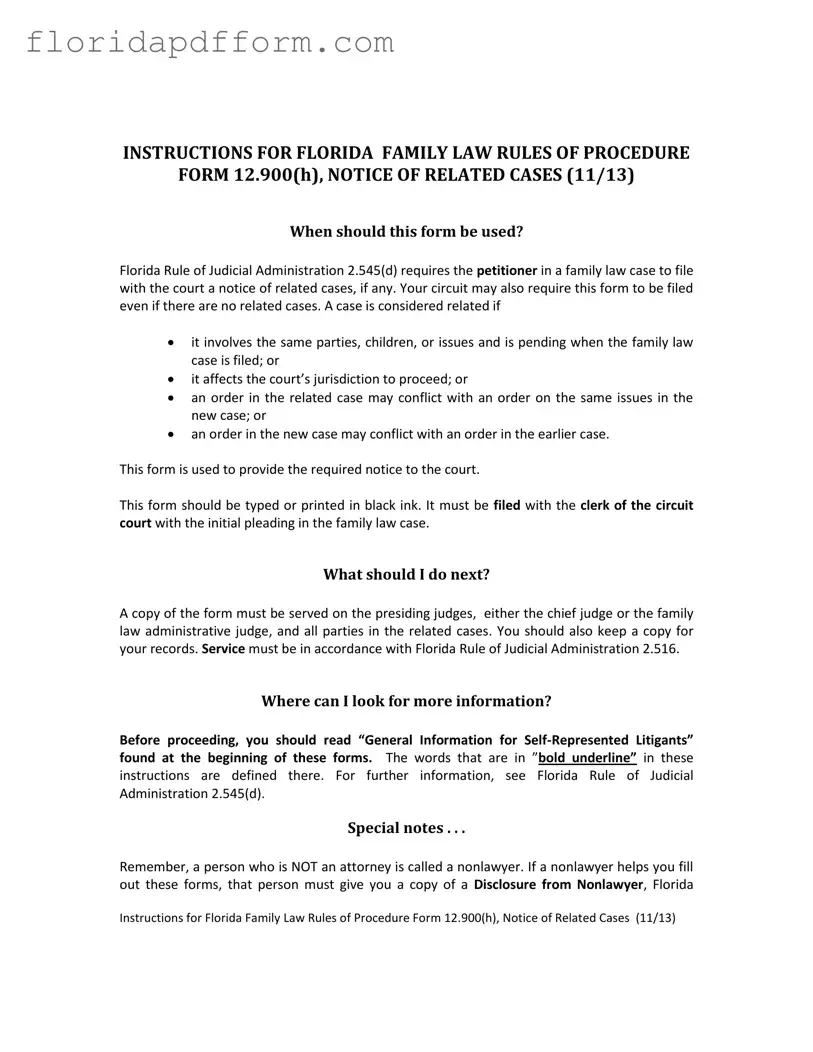Free Florida Procedure Form
The Florida Procedure form, specifically Form 12.900(h), is a legal document that serves to notify the court of any related cases in family law matters. This form is essential when a petitioner files a family law case, as it ensures that the court is aware of any existing cases that may involve the same parties, children, or issues. Properly completing and submitting this form helps maintain the integrity of the judicial process by preventing conflicting orders from different cases.
Launch Editor
